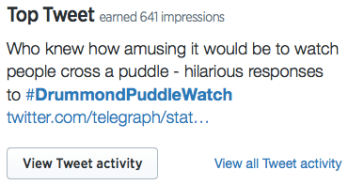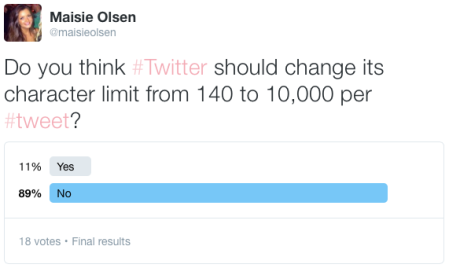The British Prime Minister, David Cameron, once declared: “The trouble with Twitter, the instantness of it – too many twits might make a twat.” There are certainly plenty of cases to support the conservative leader’s view (who has since joined Twitter anyway) – with several of the legal risks highlighted in my previous blog post.
However, when you come to realise that Twitter is not just a platform for dumbed-down views and a hub for celebrity gossip, you are greeted with the positive elements associated with microblogging. Microblogging is defined as “the activity or practice of making short, frequent posts to a microblog“. For the subject of this blog post, the microblog in question is Twitter.
You can see my Twitter account here.
In order to provide a thorough reflection on my engagement on the social media platform I began by making a list in the style of ‘pros’ and ‘cons’. The positive points filled up fast as I’ve genuinely found Twitter to be a really useful and interesting exercise in my News and Journalism unit. I’ve been a member of the platform since March 2011, yet it was only recently I started to utilise it to its full potential.
This new approach started with creating Twitter Lists. I identified and grouped together a list of 20 individuals who I deem useful and relevant to follow in terms of news-related content. This list ranged from BBC Editor’s, The Guardian correspondents and BuzzFeed News and VICE journalists. To compliment this list of people, I also created a list of organisations with the same purpose and I soon had a collection of valuable news organisations both international and national. I’ve found Twitter Lists to be a valuable tool for they allow me to group together relevant accounts as a source of information for news and current affairs, making the process much quicker and easier.
In terms of my own use of Twitter, I have found Hashtags to be one of the most useful characteristics for several reasons. I searched for relevant hashtags when looking for information, also using hashtags in my own tweets to allow others to see my views on the hashtag in-hand. They also allowed me to quickly discover what was relevant and topical based on what was trending at the time. The effectiveness of hashtagging is evident when I look to my Twitter Analytics, allowing me to see an overview of the impressions and engagement from my tweets. As you can see from the screenshot below, inserting the trending hashtag for that time earned my tweet 641 impressions.

Along with hashtags, I found that retweeting and @ing the accounts of whom I was referring to gave more substance to my Twitter feed, again working to tie in the information in one place.
From Twitter Analytics I also discovered that my most effective tweets in terms of impressions and engagement in particular were from Twitter polls. I’ve found it to be a valuable tool throughout my microblogging experience, allowing me to create a conversation and gain feedback around topics of interest – especially beneficial for the subjects of my blog posts. This integration between Twitter and WordPress has been particularly useful when sharing to Twitter a published blog post, therefore promoting the post while creating a sense of unity between the platforms.
Another more recent addition to Twitter is Moments, launched at a beneficial (and perhaps lucky) time with regards to my engagement on the platform. The feature works as a news curation tool, locating the most topical stories in one easily accessible place. My first blog post was about Twitter Moments launching in the UK on that day and almost a month on I can confirm that I have found it to be a useful function. I find it a valuable tool because I use Twitter predominantly to keep up-to-date with news, which is perhaps why my poll results show that the majority had not used it at that time:

One of the most recognisable characteristics of Twitter is its 140-character limit per tweet. Initially, I considered this to be a disadvantage to the platform, but I have since found it to be somewhat endearing. It requires me to express myself in a manner most suited to the platform: sharp, concise and direct. I found myself giving a great deal of thought into the posts I was sharing, making sure to say what needed to be said in as little characters possible. This tied in with my use of appropriate and relevant hashtags, allowing for more of a story to unfold beyond the initial tweet.
It’s worth noting that Twitter has recently announced its plans to abolish the 140-character tweets for ones that extend to 10,000 (read what CEO and co-founder of Twitter, Jack Dorsey, had to say in this tweet). A 10,000 character limit would certainly take the fun out of tweeting an article or photo and automatically being left with only 116 characters to play with. #Twitter10k was the top trending topic on the platform as the idea of the extension has been met with with some backlash. I took to the social media site to ask if users were fans of the idea (or seemingly, not…)

It will be interesting to see how Twitter develops as a platform for microblogging, with the potential character limit extension perhaps making it more of a blog than a microblog. For that particular prospect we will have to wait and see – but for now, I can conclude that I have gained a great deal from my Twitter engagement. I have found a valuable use for Twitter for it works effectively as a distributor and destination for news. The tips and tricks I have learnt and developed with regards to microblogging have been invaluable and I plan to carry on using them in the realm of social media.
(Header image is labeled for noncommercial reuse – you can find it here)

2 thoughts on “Twitter: a reflection on microblogging.”